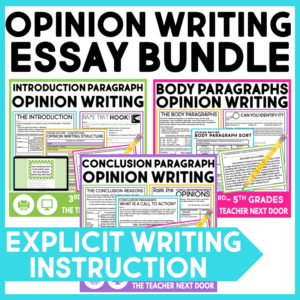
Making inferences is a super important skill for both 4th and 5th graders. Luckily, the process for making an inference is simple. Just take some clues from the text, add some of your own prior knowledge, and voila! An inference is born! Easy peasy, right?
Just kidding, of course, we all know it’s NOT that easy! While the steps are pretty straightforward, there is quite a bit more thinking that has to go into it. We need to teach students to think more deeply about the inferences that they make, to make sure that all of the pieces fit together, like a puzzle!
Sometimes the colors on two puzzle pieces REALLY look like a match, or the shape of two pieces look like just the PERFECT fit, but when you actually try to put them together they just don’t fit. Same goes for making inferences. If the pieces don’t fit, you’ve got to try a different way.
That said, how can we help kids evaluate their inferences and make sure the pieces fit together perfectly?
First, students have to be sure that they are basing their inferences off of what the text actually says! We don’t want guesses or assumptions, so it’s super important to use evidence that is directly stated in the text.
In both 4th and 5th grade, students are expected to use specific details and examples from the text. 4th graders need to be able to paraphrase this information. In 5th grade, students will have to quote directly from the text.
You may want to focus on this skill first before completing a lengthy, inference-based written response. It’s important that students know how to cite the text properly (and use quotation marks properly) before mastering this skill.
As students read more and gather more information, another key element is to make sure that everything continues to fit together. Kids have to be metacognitive as they are reading. They’ll need to keep checking to be sure that the “puzzle pieces” still fit together.
This means that students may have to adjust their inferences as they read to be more accurate. It’s essential to make sure that each piece of the puzzle fits, even as more information is added.
A Concrete Example
Take this sentence for example, “Water was dripping off the girl’s hair.”
Hmmm, what’s going on here?
- She could be at the swimming pool, outside in the rain
- Maybe someone just spilled a glass of water on her
- She may have just finished a vigorous workout
There are lots of inference possibilities!
If the next line says, “The pool water shimmered in the bright sun,” that gives us more clues to work with, so we can refine our inferences. I still don’t have the full picture, but know that the girl must be at a swimming pool.
On the other hand, if the next line said, “She yelled at her brother, ‘I can’t believe you did that!’” that lets me know that something entirely different is going on.
Hopefully, this post has given you some ideas on how to talk about inferencing with your students. If you’re looking for ideas on inference activities activity, check out this post
Do your students need to hone this skill?
If you’re looking for some solid inferencing practice for your students, check out this Inferences, Details, Examples Digital Reading Google Slides™ Distance Learning resource, which includes 32 matching puzzles. (See how we’re keeping with the “puzzle piece” theme?)

Making Inferences Game Print and Digital Distance Learning is another fun and engaging way to provide students with practice for making inferences! Check out what some of the teachers who have purchased this resource are saying:
“Perfect activity for centers or small group time. Great activity for practicing a challenging skill.!” –April C.
“Great way to “change-up” the usual reading routine.” –Tayler B.
“Easy to understand and use. Great practice for this concept.” -Dyanna C.
Standards Alignment: RL.4.1 – Refer to details and examples in a text when explaining what the text says explicitly and when drawing inferences from the text.
Interested in reading more? Check out these blogs!
Mentor Texts for Making Inferences
QAR: 4 Question and Answer Relationships to Help Students Clarify Text
How to Inspire Students to Ask and Answer Meaningful Questions About Informational Text
Important Steps to Teach Paired Passages

















